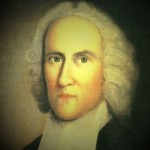In 1787, a few concerned students met for prayer at Virginia’s Hampden-Sydney College. None were particularly active Christians, yet their concern for the college’s low moral state led them to beseech God’s help. Initially it did not go well. Disturbed by a band of unruly classmates, they locked themselves in a room. Eventually the institution’s president rebuked the rowdies and invited the prayer warriors into his study. There they prayed until revival fell and more than half of the student body professed conversion to faith in Christ. Unbeknownst to those students, the spiritual awakening at Hampden-Sydney would spark similar revivals on college campuses across America.1
 Decades earlier, America’s First Great Awakening produced evangelical conversions in droves as preachers like Jonathan Edwards and George Whitefield called sinners to faith in Christ. A byproduct of those conversions was the establishment of colleges to train young people for ministry, leadership, and godly living. Rutgers University, Dartmouth College, and Brown University were just a few of the institutions to emerge. Yet as the eighteenth century progressed, the spiritual fervor in America’s halls of higher learning declined into apathy and immorality. Things changed only when God brought a national revival known as the Second Great Awakening, a revival that had a massive impact on college campuses.
Decades earlier, America’s First Great Awakening produced evangelical conversions in droves as preachers like Jonathan Edwards and George Whitefield called sinners to faith in Christ. A byproduct of those conversions was the establishment of colleges to train young people for ministry, leadership, and godly living. Rutgers University, Dartmouth College, and Brown University were just a few of the institutions to emerge. Yet as the eighteenth century progressed, the spiritual fervor in America’s halls of higher learning declined into apathy and immorality. Things changed only when God brought a national revival known as the Second Great Awakening, a revival that had a massive impact on college campuses.
At Yale, awakening peaked in 1802. In part through the inspired preaching of President Timothy Dwight, the Lord converted a third of the student body that year. And similar instances of revival hit at other schools – Andover, Princeton, Washington, and Amherst. As a result, men of God were appointed college presidents, campuses established regular prayer days during the academic term, and the college sermon became a fixture of university life.
Unfortunately, the revival fires burned out over time. But over the next 200 years, God graciously brought a series of campus awakenings, just when higher education seemed to need them. For instance, in 1857 a revival that began with noon prayer meetings among businessmen in New York drove university students nationwide to prayer, repentance, and conversion. In 1858 alone, one third of Middlebury’s undergraduates professed conversion, almost half of Yale’s student body confessed faith in Christ, and only three or four of Amherst’s graduating seniors remained unconverted. A wave of students undertook missionary work overseas while college YMCAs formed to continue campus evangelism at home.
The first 15 years of the twentieth century brought additional awakenings at schools like MIT, Cornell, and Rutgers. Revivals in 1905 led to widespread adoption of the honor system for college exams and to enrollment gains in voluntary campus Bible studies. Then, after World War II, revival stirred again in America. A chapel service at Kentucky’s Asbury College lasted 118 consecutive hours. On the West Coast, Campus Crusade for Christ was founded. The ministries of the Navigators and of Billy Graham expanded, with strong impact on the campuses.
Sporadically through the 1960s campuses reported revivals, with another wave coming in 1970.14 At Asbury, for example, a chapel service transformed into a spontaneous wave of repentance and worship.2 In 1995, a movement of God began at Howard Payne University in Brownwood, Texas, and it spread to many schools throughout the nation, including Wheaton College in Illinois.3 As recently as 2006, Asbury reported hundreds of students for days on end remaining in the school’s chapel for prayer and praise.
These revivals happen only by the sovereign work of God’s hand. That is why Scripture counsels those who hunger for revival to “humble themselves, and pray and seek [God’s] face and turn from their wicked ways.” Only then will He “hear from heaven and … forgive their sin and heal their land” (2 Chron. 7:14). Because of God’s power, even campuses filled with contempt for God’s standards can experience revival fires once more. Indeed, He may still move in stunning ways.
——————————————
Endnotes
1 J. Edwin Orr, Campus Aflame: Evangelical Awakenings in Collegiate Communities (Glendale, CA: Regal, 1971), 25.
2 Lewis A. Drummond, The Awakening That Must Come (Nashville: Broadman, 1978), 94-96. See also Robert E. Coleman, One Divine Moment (Old Tappan, NJ: Fleming H. Revell, 1970).
3 Timothy K. Beougher and Lyle W. Dorsett, Accounts of a Campus Revival: Wheaton College, 1995 (Wheaton, IL: Harold Shaw, 1995).